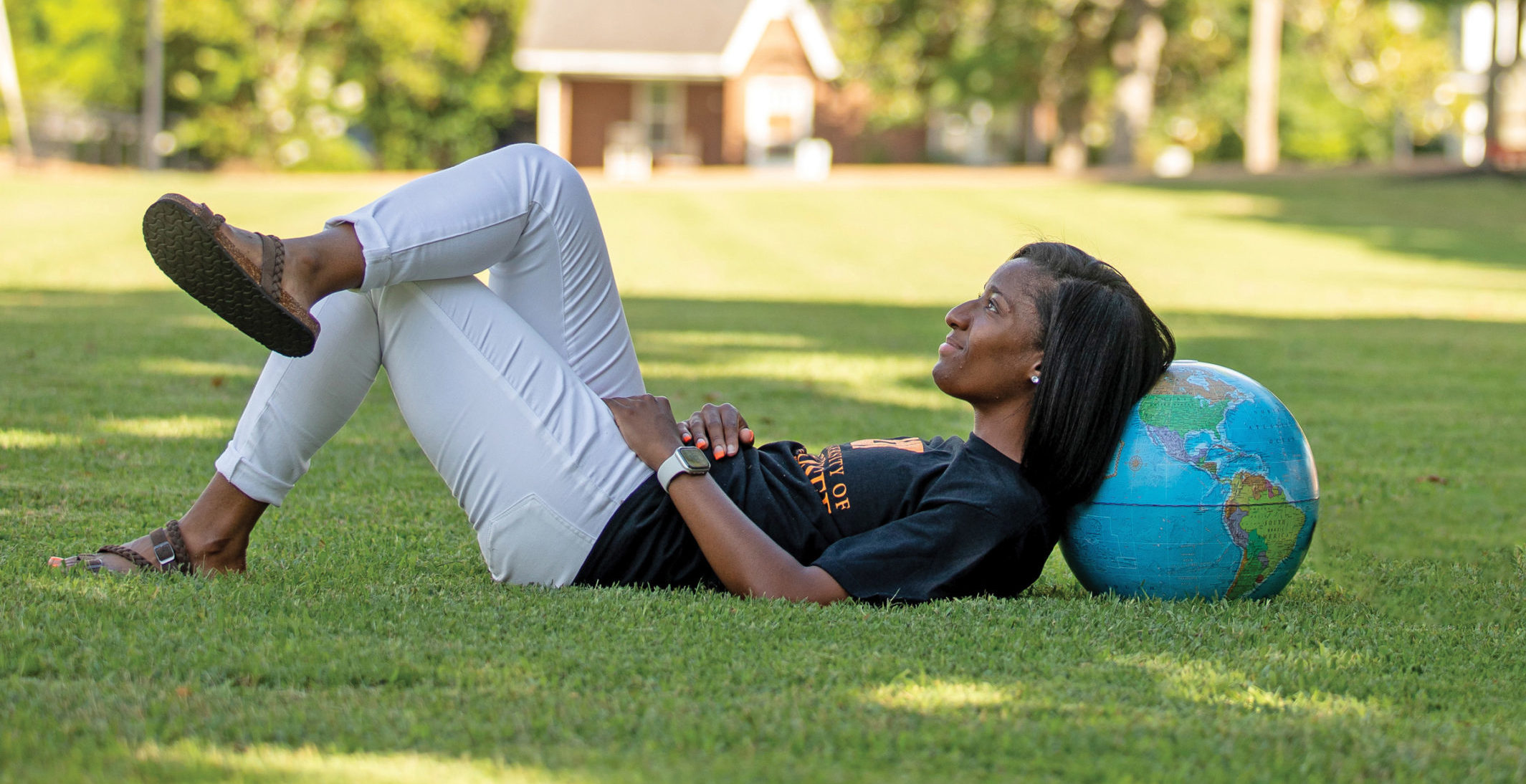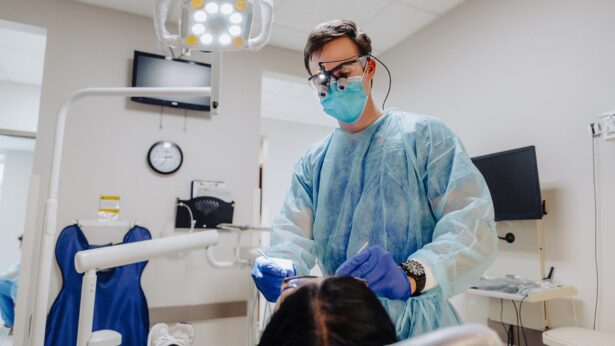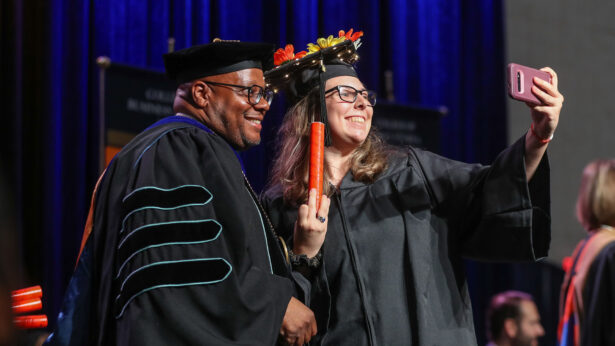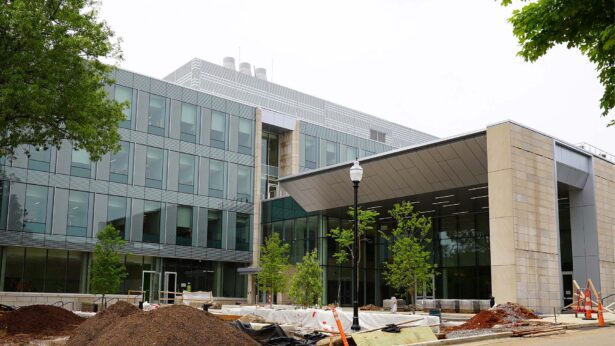By Jennifer Sicking | Photos by Raffe Lazarian
Sometimes a conversation over a cup of coffee can change everything.
It can change a college.
It can change a university system.
It can definitely spark excitement in a town.
In May 2020, UT System President Randy Boyd (Knoxville ’79) had restarted his quest to visit UT’s extension offices in all 95 counties after a COVID-19-induced pause. With such a meeting planned in Giles County, Boyd asked for a 7:30 a.m. meeting with Mark La Branche, president of Martin Methodist College (MMC), located in Pulaski, the county seat.
“I was wondering if there were some opportunities for the University of Tennessee to partner with Martin Methodist in a program or some type of initiative,” Boyd says of requesting that meeting.
And, in the back of Boyd’s mind, he thought that maybe, just maybe, down the road in a few years there would be the opportunity to bring MMC with its 800 students into the 50,000-student University of Tennessee System family.
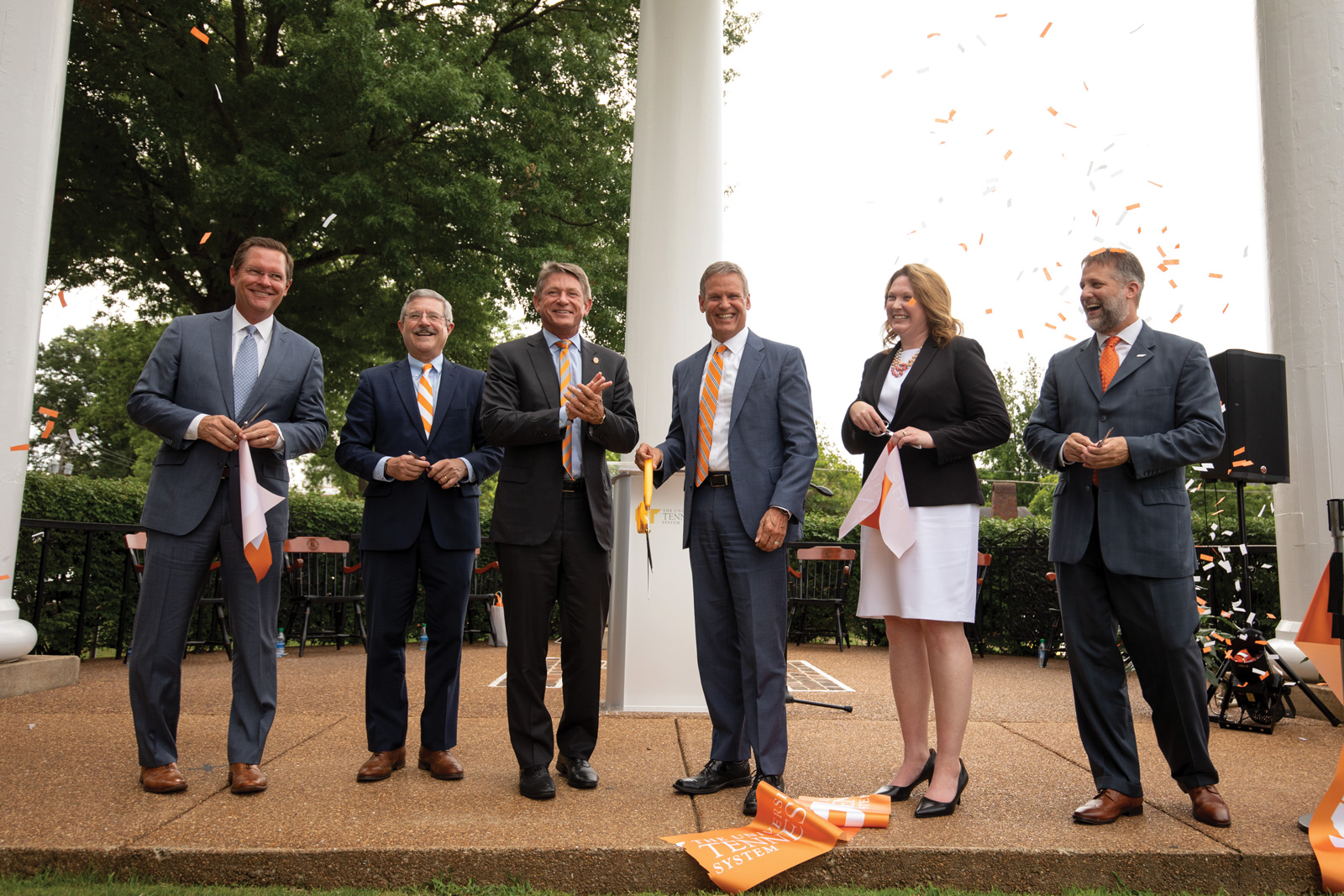
In the meeting, La Branche shared his college’s mission of helping provide the workforce for Southern Middle Tennessee.
“As he talked about their desire to serve the region and people of the area, it sounded so much like the University of Tennessee’s mission, which is to serve all the people of the state of Tennessee, to provide a ladder up for the working and middle class to get a better job and a better education,” Boyd says.
MMC leaders had recently begun conversations about its future. While the school was not in a crisis, its leadership knew it would face some headwinds from COVID-19 and declining enrollment, with which many universities struggle. Its board of trustees and leadership had decided in the spring of 2020 to consider partnerships, collaborations and possible mergers to sustain and expand its mission: providing access to education for everyone.
“Over 50 percent of our students are Pell-Grant eligible. Over 50 percent are first-generation college students,” La Branche says. “It was critical to sustain this mission.”
Then came Boyd’s call and a conversation over coffee.
As they discussed nursing programs, La Branche mentioned the school’s interest in a possible merger. In that instant, Boyd’s future plan became a present plan.
“When he shared his idea, which was one that I had thought of a little bit beforehand—I’m not so sure I would have been quite so bold to propose it on the first date—I immediately said, ‘Great idea, Mark. Let’s pursue this,’” Boyd says.
The pursuit began.
“You may have heard the phrase, ‘There’s nothing more powerful than an idea whose time has come,’ a quote from French writer Victor Hugo. Well, it was almost like, when the idea hit, well, there’s nothing more powerful than a person that’s as passionate as Randy,” La Branche says.
UT System and MMC jointly released the news they were considering the acquisition in September 2020.
The plan to add another public higher education institution met with approval from Gov. Bill Lee and the Tennessee General Assembly, which set aside $5.1 million in recurring and $1 million in nonrecurring support to fund UT Southern. By becoming a public institution, tuition fell by 60 percent from $26,000 to $10,200 a year.
After nine months of conversations, meetings and studies, the UT Board of Trustees approved acquiring MMC and changing its name to UT Southern on June 25.
UT Southern now acts as an oasis in a 13-county public higher-education desert. More than 2,000 students a year have headed south for higher education—many never to return.
“That region’s losing thousands of talented young people every year to other states,” Boyd says. “Another great thing UT Southern will do is keep that talent within the region.”
800 students
(on average)
42% Male
58% Female
73% White
10% Black
5% Hispanic
5% Unknown
3% Multi-racial
3% Nonresident
1% Other
Academic Programs
- 23 Undergraduate
- 2 Graduate
- 1 Associate
- 1 Certificate
Programs of Study
- Business
- Education
- Humanities
- Mathematics and sciences
- Nursing and health sciences
- Social sciences
The Town
Pulaski Mayor Pat Ford attended a high-school football game after the news broke about the proposed acquisition.
“I had folks grabbing my arm as I was walking by and asking, ‘Is this real talk?’” Ford says.
He knew immediately what it could mean for the town he has led since 2010.
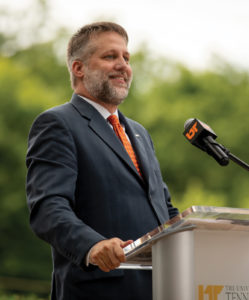
“This one single event—this merger—could be the biggest that ever happens in Giles County,” he says. “As a leader, it’s exciting to be a part of that.”
But the Muscle Shoals, Alabama, native also has a 30-year history with the college—since he first visited it. He planned to attend college in Alabama until he accepted an invitation to visit MMC.
“This is where I want to go to school,” he said to his parents about the then two-year college as soon as they stepped out of the car.
He would be among the first graduates in 1996 after it transitioned to a four-year college in 1993.
“I’ve looked back on it as a turning point in my life,” he says of attending MMC. “In high school, I was reserved, quiet and shy. I took a zero on a speech rather than give it.”
Ford went to work for the college as an admissions counselor after graduating. He then worked in the athletic department and advancement office. He’s currently director of first-year experiences in addition to serving as mayor. From a student to a staff member, Ford knows the college.
“One hundred percent of what makes it special are the people,” he says. “It’s family. We support each other; we back each other. There’s a caring atmosphere and culture that’s been built over the years.”
As mayor, he also values the diverse and highly educated faculty who bring insight from different life experiences to the town of just under 8,000.
“They come from all over the world. They’ve lived in different places, and you bring them here to a small town,” he says. “As the community engages with the college and the college engages with the community, we get to learn different perspectives.”
Now with UT as an added component to the mixture, Ford foresees good times ahead.
“The University of Tennessee System will bring Martin Methodist, our community and Giles County to the next level,” he says.
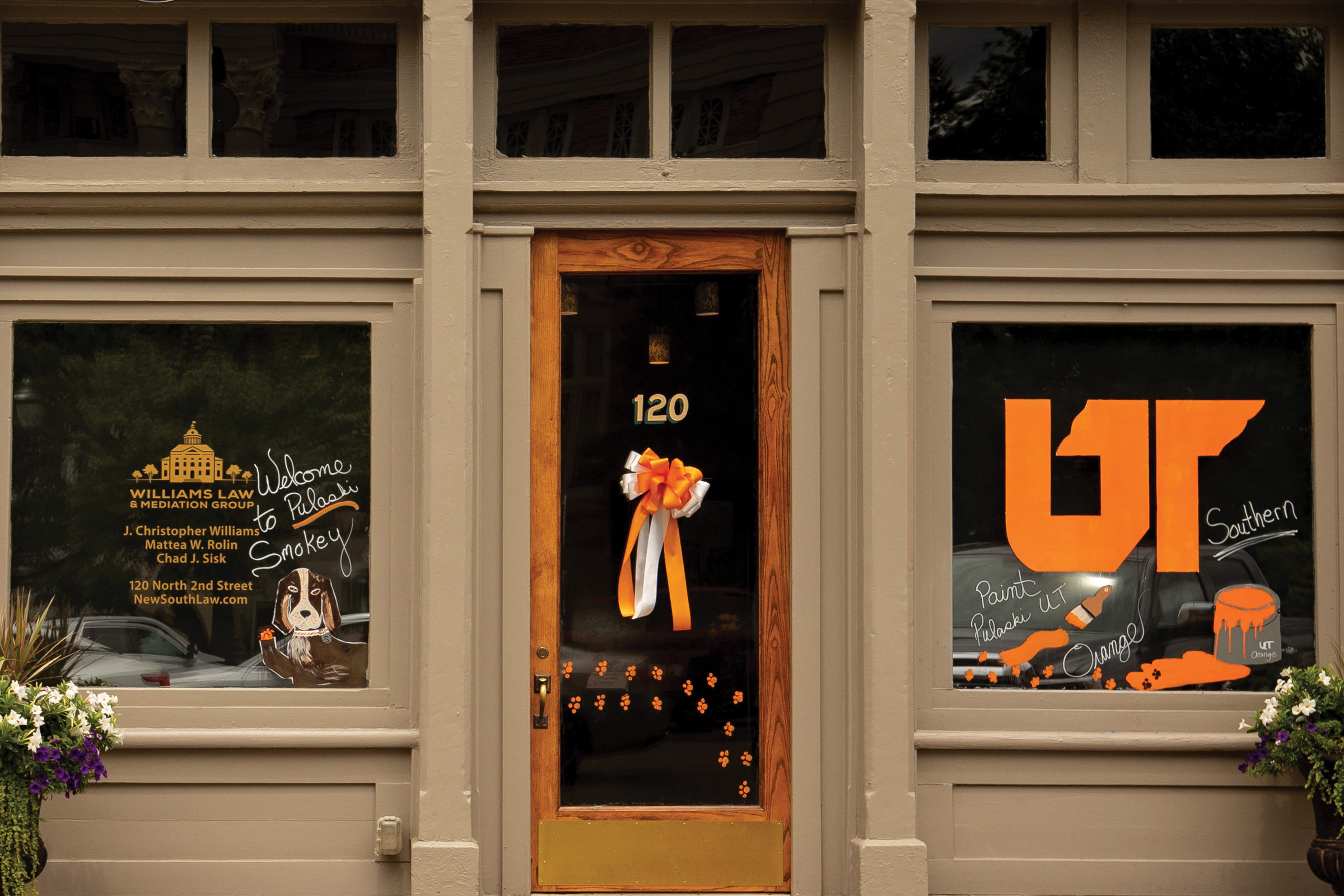
on the campus of UT Southern to window decorations and T-shirts, Giles County took on an orange hue with the birth of UT Southern.
University of Tennessee Timeline
1794 Blount College founded
1807 Then renamed East Tennessee College
1840 Then renamed East Tennessee University
1869 East Tennessee University designated a land-grant institution by the Morrill Act of 1862
1870 Martin Female College founded
1879 East Tennessee University renamed University of Tennessee
1911 UT Health Science Center established
1927 UT Junior College established
1938 Martin Female College renamed Martin College, became coeducational
1942 UT and Oak Ridge National Laboratory collaboration began
1951 UT Junior College became University of Tennessee, Martin Branch
1964 UT Space Institute established in Tullahoma
1967 UT, Martin Branch became University of Tennessee at Martin
1968 UT System created; University of Tennessee becomes University of Tennessee, Knoxville; UT Institute of Agriculture established
1969 University of Chattanooga joined the UT System and renamed University of Tennessee at Chattanooga
1971 Institute for Public Service created
1986 Martin College renamed Martin Methodist College
1993 Martin Methodist College became a four-year institution
2021 Martin Methodist College Joined the UT System, renamed UT Southern
UT and MMC Alumni
Dr. Allen Scoggin (HSC ’67, ’72) and Marshall Brown (Knoxville ’69) have deep roots with UT and Giles County. Scoggin attended Pulaski Elementary School, Giles County High School and MMC. Both men have served on the MMC Board of Trustees.
“I literally leaped for joy on the day it was announced,” Brown says. “I hate the loss of Methodist higher learning, but I so welcome UT and the resources it will bring.”
He also knows UT will be a benefit to residents of Pulaski and Giles County as well as students and faculty.
“That’s four wins stacked on top of each other,” Brown says.
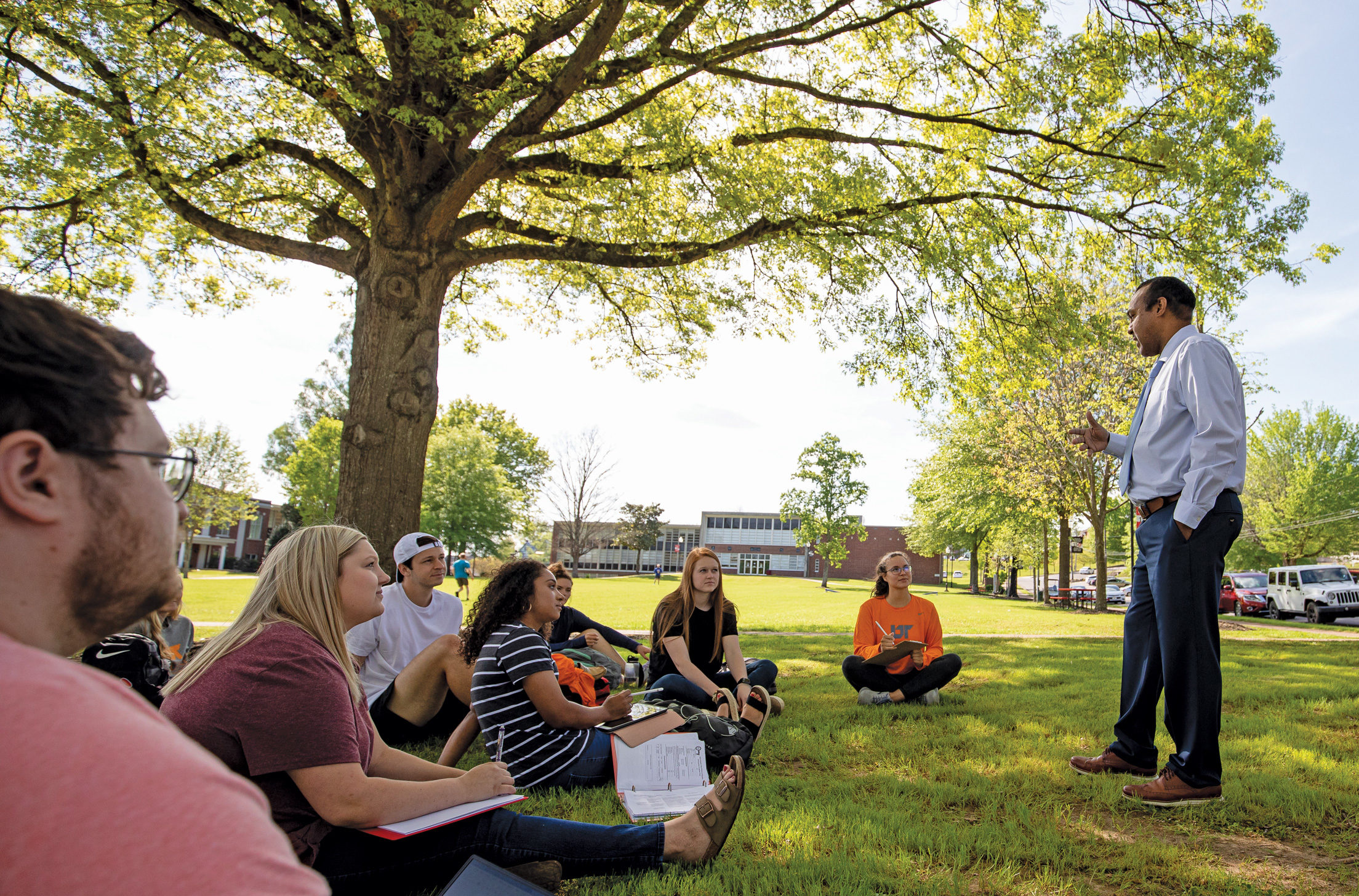
Scoggin sees a bright future ahead for UT Southern, and he hopes it grows to become the size of UT Martin, at about 7,000 students, or UT Chattanooga, at about 12,000 students. From conversations, he thinks it is possible in the coming years.
“I have family all over the county,” Scoggin says. “Now they’re thinking about attending UT Southern instead of Alabama or Ole Miss.”
Scoggin, who also taught as a UTHSC associate professor of pharmacy and founded Med Communications, knows UT and UTS well. Both have great leadership and instructors, he says.
“The right people are coming together at the right time,” he says.
Brown, who was a UT Knoxville Torchbearer and Volunteer of the Year in 1968, agrees.
“The integrity of Martin Methodist coupled with the integrity and reputation of UT—I think it’s a perfect match,” he says.
UT Southern Students
Skylaur Bedingfield, a senior business management major from Leoma, wanted to stay close to her family and chose Martin Methodist because it is only a 20-minute drive away. She’s happy with the private university becoming public.
“I’m excited to be part of the UT System and to be the first class to graduate from UT Southern,” she says. “I’m excited to see where it takes us.”
Joining the University of Tennessee System allowed UTS leaders to reimagine its mascot and athletic colors. After hosting focus groups to listen to students, faculty, alumni and community members, university leadership opted to add orange to its color palate of red and black. It also embraced a new mascot—Flame the Firehawk. Knoxville-based illustrator Danny Wilson developed the concept and logo for the Firehawks.
Faith Sherrow, a senior biology major from Dyersburg, plays shooting guard on the basketball team. The rebranding of the athletic teams to Firehawks excites her.
“It’s the one I voted for when the survey came out,” she says. “It will be different, and I think it will look cool on things.”
Both women hope that in years to come UTS keeps its personal attention to students’ education, including professors knowing their students on a first-name basis.
“It probably will grow, which will be good for students, but I hope it keeps the quality of relationships that you make with professors and that small-town community feel,” Sherrow says.
A Man With a Mission
UT Southern Chancellor Mark La Branche has been a man with a mission.
“It’s all a calling to me,” he says. “It’s all about mission, fulfilling a mission in the world.”
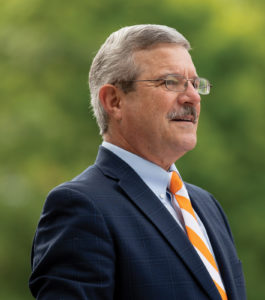
As a child, health care interested him as he participated in the Boy Scouts Medical Explorer program. He started working in a hospital as an orderly, progressing his way into respiratory care. He met his wife, Mona, when he cared for neonates and she was in nursing school and assigned to the nursery.
But then he realized philosophy was a greater passion to him than science. That passion led him to a bachelor’s degree from University of South Alabama and then on to a Master of Divinity from Emory University and a Doctor of Ministry from Boston University. It also led him from being a pastor into higher education as director of church relations at Huntingdon College. He left that college in 2009 as senior vice president and chief advancement officer to become president of Louisburg College, where he served until 2017, when he became president of Martin Methodist College.
“I just have always been curious,” La Branche says. “In the Methodist church, we think knowledge is a divine pursuit.”
But it’s the mission that continues to call La Branche, even if it means moving Martin Methodist College away from the Methodist church and into the University of Tennessee System.
“The church is just very proud that they’ve sustained the mission over the past 151 years and that now the mission will have an expanded future that is highly secure,” he says. “My willingness to do the hard thing has to do with the fact that we’re here for a critical mission, and that is to develop lives.”
Mascots
- Spinsters
- 1939-1940—Cardinals (brief foray into football)
- 1950—Indians
- 2002—RedHawks
- 2021—Firehawks
Athletic Teams
Compete in NAIA
- Baseball
- Basketball (Men and Women)
- Bowling (Men and Women)
- Cross Country (Men and Women)
- Golf (Men and Women)
- Soccer (Men and Women)
- Swimming (Men and Women)
- Tennis (Men and Women)
- Volleyball
- Softball
- Clay Target (Coed)
Red to Orange
Less than a week after the UT Board of Trustees gave final approval to acquiring MMC, a crowd of about 1,500 gathered in downtown Pulaski at about 9 p.m. on June 30 to celebrate the change that would arrive at midnight.
Boyd, La Branche and others joined the crowd to await the momentous occasion. Boyd has often remarked that he considers the 1960s, which included the addition of UT Martin as a standalone campus in 1967 and UT Chattanooga in 1969, as the greatest decade in UT’s history. He’s challenged UT’s faculty and staff to make this one even more notable.
“I think the most important way to define our greatest decade is by how we serve the people of the state of Tennessee and by being able to provide new geographic access to a region of our state that was otherwise underserved,” he says. “To be able to provide this opportunity for so many people in our state, it will be one of the landmark contributions of this decade.”
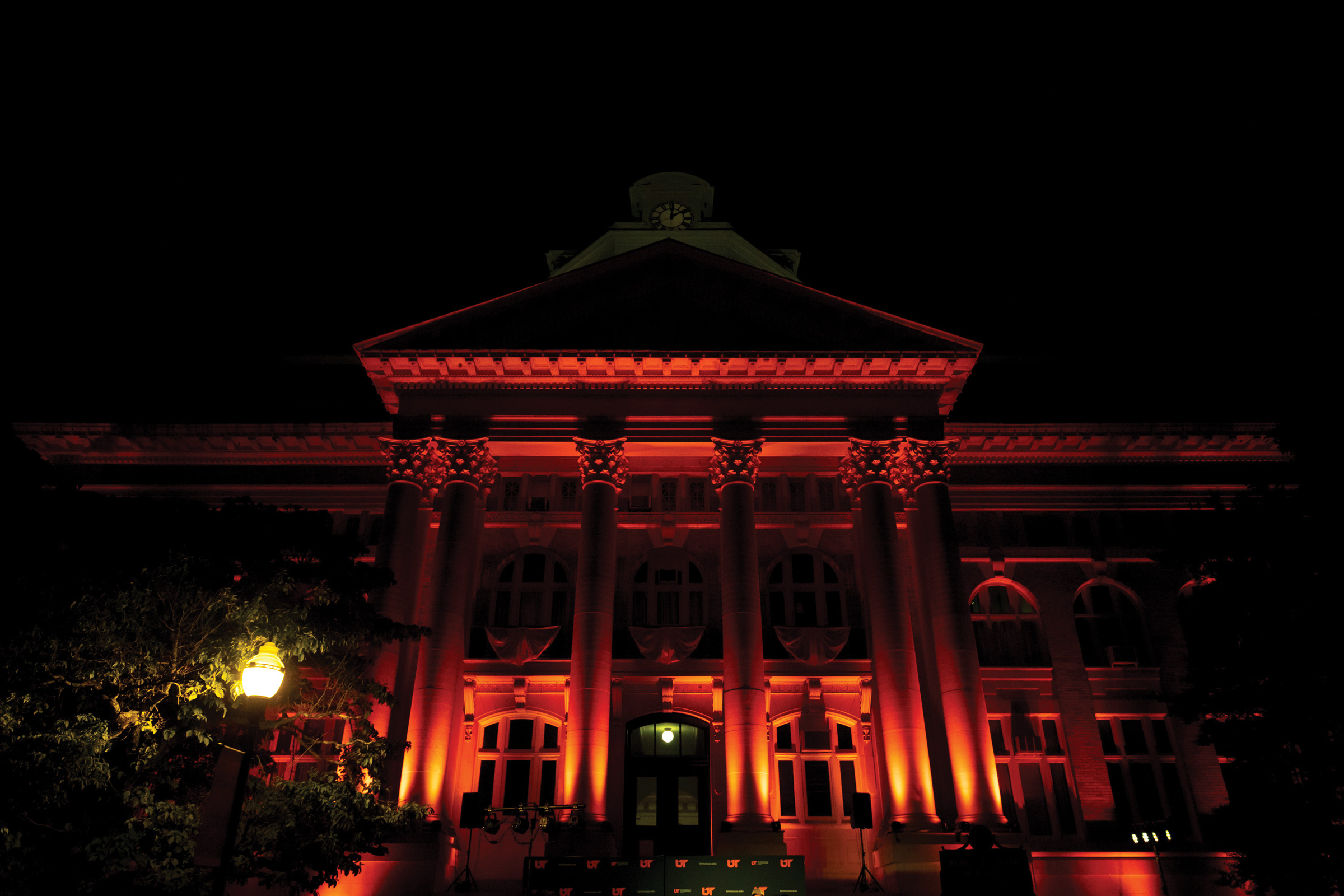
It had been one year of waiting on the possible threshold of a new life. As the waiting crowd danced to music, the celebration capped the year of work.
“To be in a space where you’re letting go of the past, but the future is yet to come, has been suspenseful,” La Branche says. “I hate suspense. But now it seems real.”
Boyd led the crowd in the countdown to midnight, chanting down to the birth of UT Southern. At the stroke of midnight, to the cheering crowd, the red floodlight lighting up the Giles County Courthouse symbolizing MMC’s 151-year history turned orange, and the University of Tennessee Southern entered the world:
Changing the UT System.
Changing a campus in Southern Middle Tennessee.
Changing, potentially, thousands of lives for generations through educational and economic opportunities.
